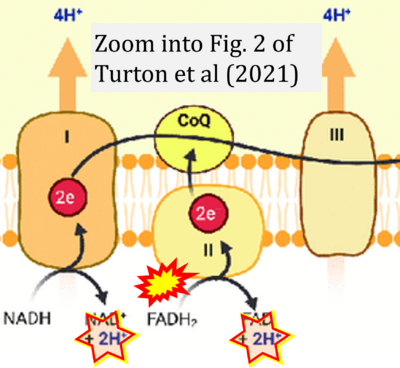Turton 2021 Expert Opinion Orphan Drugs
| Turton N, Bowers N, Khajeh S, Hargreaves IP, Heaton RA (2021) Coenzyme Q10 and the exclusive club of diseases that show a limited response to treatment. Expert Opinion on Orphan Drugs 9:151-60. https://doi.org/10.1080/21678707.2021.1932459. |
Turton N, Bowers N, Khajeh S, Hargreaves IP, Heaton RA (2021) Expert Opinion on Orphan Drugs
Abstract: Introduction: Coenzyme Q10 (CoQ10) is a ubiquitous organic molecule with a significant role in the mitochondrial electron transport chain (ETC). As a result of its role in such an important biological process, CoQ10 deficiency has been implicated in the pathogenesis of numerous diseases such as Parkinson’s disease (PD) and multiple sclerosis (MS). This has led to multiple attempts to use CoQ10 supplementation as a treatment or pre-treatment with varying degrees of success.
Areas covered: The present review will identify evidence of mitochondrial dysfunction in MS, PD and mitochondrial ETC disorders. In addition, the inability of Co10 supplementation to elicit significant clinical outcome in these disorders and possible flaws in these studies will be discussed. The databases utilized for this review were the Web of science and PubMed, with inclusive dates (1957–2021).
Expert opinion: A lack of improved neurological outcome in these disorders post treatment with CoQ10 may be attributable to the limited ability of CoQ10 to cross the blood–brain barrier. Thus, CoQ10 alternatives should also be considered. Other factors including time of disease diagnosis, dosage, administration, and duration of CoQ10 therapy may have a significant influence on the efficacy of this treatment.
• Bioblast editor: Gnaiger E
Correction: FADH2 and Complex II
- FADH2 is shown as the substrate feeding electrons into Complex II (CII). This is wrong and requires correction - for details see Gnaiger (2024).
- Gnaiger E (2024) Complex II ambiguities ― FADH2 in the electron transfer system. J Biol Chem 300:105470. https://doi.org/10.1016/j.jbc.2023.105470 - »Bioblast link«
Hydrogen ion ambiguities in the electron transfer system
Communicated by Gnaiger E (2023-10-08) last update 2023-11-10
- Electron (e-) transfer linked to hydrogen ion (hydron; H+) transfer is a fundamental concept in the field of bioenergetics, critical for understanding redox-coupled energy transformations.
- However, the current literature contains inconsistencies regarding H+ formation on the negative side of bioenergetic membranes, such as the matrix side of the mitochondrial inner membrane, when NADH is oxidized during oxidative phosphorylation (OXPHOS). Ambiguities arise when examining the oxidation of NADH by respiratory Complex I or succinate by Complex II.
- Oxidation of NADH or succinate involves a two-electron transfer of 2{H++e-} to FMN or FAD, respectively. Figures indicating a single electron e- transferred from NADH or succinate lack accuracy.
- The oxidized NAD+ is distinguished from NAD indicating nicotinamide adenine dinucleotide independent of oxidation state.
- NADH + H+ → NAD+ +2{H++e-} is the oxidation half-reaction in this H+-linked electron transfer represented as 2{H++e-} (Gnaiger 2023). Putative H+ formation shown as NADH → NAD+ + H+ conflicts with chemiosmotic coupling stoichiometries between H+ translocation across the coupling membrane and electron transfer to oxygen. Ensuring clarity in this complex field is imperative to tackle the apparent ambiguity crisis and prevent confusion, particularly in light of the increasing number of interdisciplinary publications on bioenergetics concerning diagnostic and clinical applications of OXPHOS analysis.
Labels:
Pathway: S




